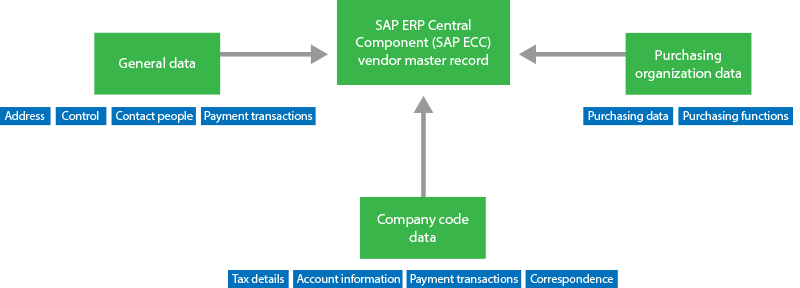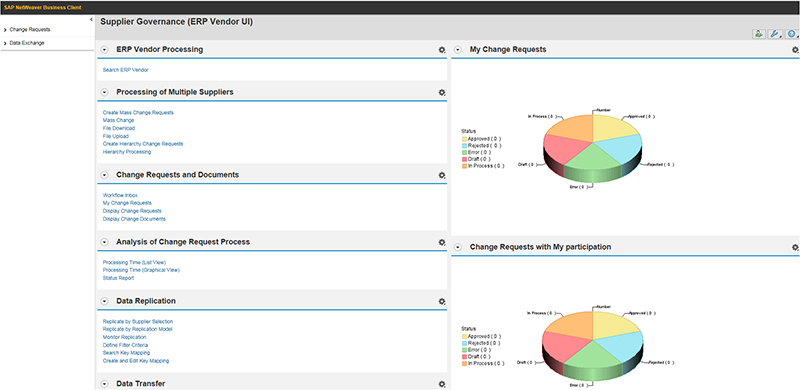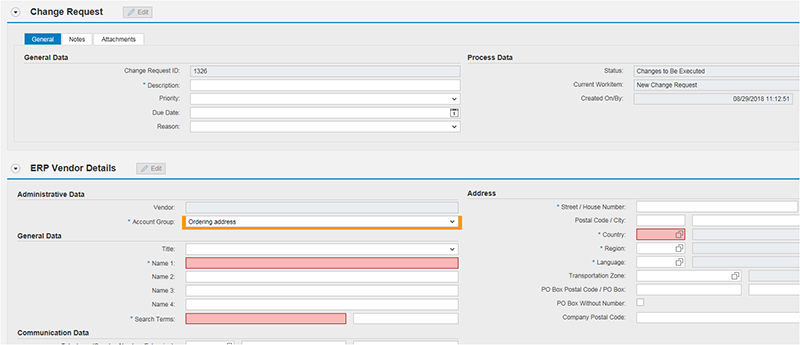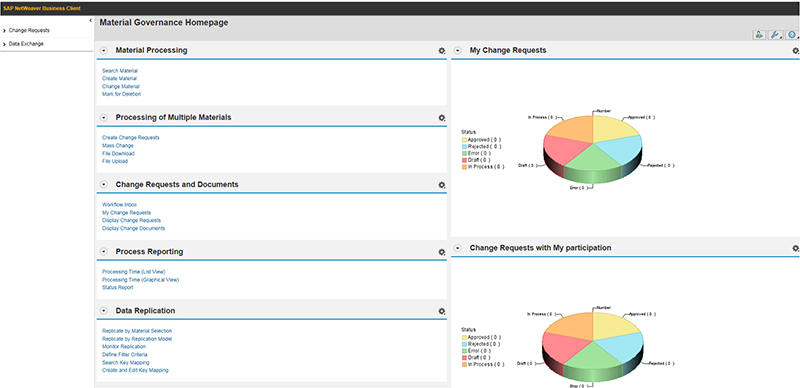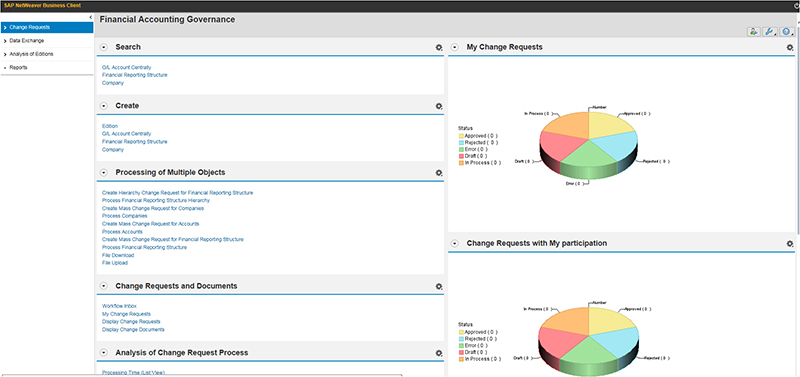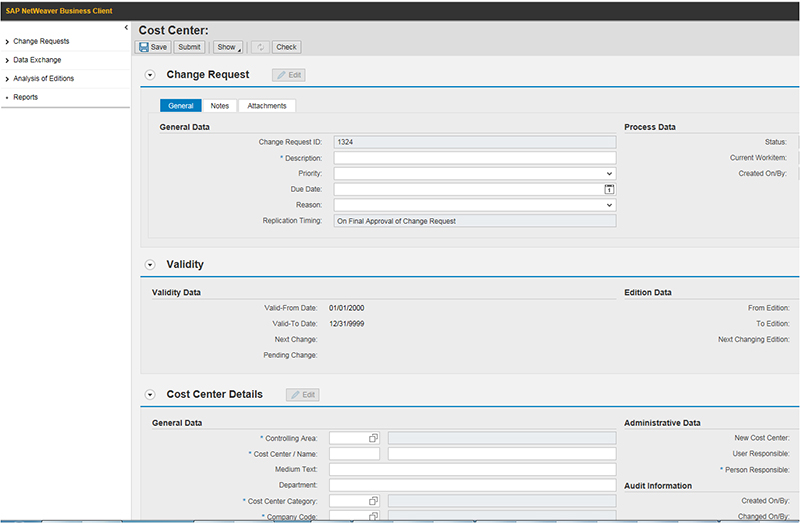Efficient Data Management in Healthcare Using SAP Master Data Governance
SAP’s Master Data Governance application provides an integrated data management capability for the creation, maintenance, validation, and distribution of master data across the enterprise. If you already have an SAP ERP system, then adding SAP Master Data Governance accelerates the master data maintenance process, leading to enhanced quality of your master data by leaps and bounds.
This tool improves master data quality and ensures compliance with the legal requirements, for instance, by enforcing validation rules already available in SAP ERP Central Component (SAP ECC). Additionally, the automated workflow emails in SAP Master Data Governance facilitate the stabilization and acceleration of the maintenance and overall business processes. The new SAP S/4HANA version also allows enhanced master data consolidation, mass processing, data remediation, and central governance activities. One of the new features is de-duplication of active master data records. SAP S/4HANA also facilitates integration with SAP Data Services and SAP Information Steward for quality, cleansing, enrichment, and data remediation.
SAP Master Data Governance Overview
The SAP Master Data Governance tool permits master data volumes up to one million records per data object. As hospitals become bigger, branch out, and internationalize, a stable tool such as SAP Master Data Governance can help in maintaining the integrity and sanctity of master data, which is essential to establishing a sound foundation. A single digit mismatch in a vendor’s bank account, an inconsistency in a customer’s ship-to address, or an incorrect description in a material master can hamper business, delay deliveries, and result in a loss of revenue. The details of a drug, surgical appliance, and equipment all reside in ERP as master data. Inefficient master data practices over a period of time can lead to staggered financial risk for a hospital. It also could jeopardize human health and lives.
Explore related questions
According to Kiran Rajaya at Baylor College of Medicine in Houston, “One of the most critical assets to our business is our customer database. Master data related to customers are pivotal to our survival as an organization. All services are ultimately driven by customer demand.”
Some companies implement SAP core modules first and then graduate to stable long-term master data management and governance strategies. This approach enables them to maximize future sales potential while continuing day-to-day business activities. On the other hand, new users of SAP applications in the process of migrating legacy data focus on efficiently converting and enriching the data into the correct SAP ECC format. Extract, transform, and load (ETL) activities have taken the front seat. Once the initial tables are loaded, their integrity is maintained by ensuring that the data is cleansed, standardized, and up-to-date. Without this conversion taking place first, users would not be able to execute business transactions in SAP ECC that require master data. They also would not have relevant data to feed into SAP BusinessObjects for reporting. According to HG Data (https://discovery.hgdata.com/product/sap-master-data-governance), medical industry leaders such as AstraZeneca have implemented SAP Master Data Governance for streamlining their data governance processes.
Process Areas
For hospitals considering new master data solutions, here are some examples of legacy data objects that could be migrated to SAP Master Data Governance. This exact list of objects would vary for each hospital based on its scope of operations, but at a high level, business process integration considerations could start with the following areas:
Procure to Pay (P2P)
P2P encompasses the end-to-end process of purchasing stocked items and consumables required for daily operations. Healthcare organizations complete numerous purchases of material from external vendors. The procurement teams are constantly trying to quantify medicine estimates, select the correct procurement methods (external or internal), prequalify vendors, and check the quality of products purchased. Subprocesses such as batch management and shelf life management of materials need closer monitoring. The buyers’ effort revolves around managing tenders, signing an outline or scheduling agreements with vendors, negotiating best prices, and ensuring adherence to agreed-upon terms. To alleviate some of these inherent complexities, an efficient SAP Master Data Governance implementation can go a long way. SAP Master Data Governance modules that need special emphasis include:
Supplier management: Maintenance of accurate vendor data, such as address, bank account details, purchasing data, and partner functions.
Material master process: Creation, maintenance, and deactivation of material master records in the ERP system.
Record to Report (R2R)
R2R is a finance and accounting process that revolves around capturing, processing, recording, and reporting relevant and accurate financial information. Some of this data is required for regulatory external financial reporting in SAP ERP Financials (FI), and some of it is for internal SAP Controlling (CO) purposes. SAP Master Data Governance modules covered as a part of this article include:
FI-related governance: Equip the hospital with tools to govern entities such as general ledger (G/L) accounts, and financial reporting structure and company codes.
CO-related governance: Provide the capability to govern the CO-related master data such as profit center, cost center hierarchy, and cost center.
Order to Cash (OTC)
OTC refers to the set of business processes for setting up customers in an SAP system, receiving and processing sales orders for goods and services, and receiving customers’ payments.
Customer management is part of the OTC stream Customer management: Address information, company code data, and sales area data.
In the words of Dr. Aditya Joshi at the University of Texas Medical Branch at Galveston, “Master data duplication at the various centers often gets ignored for a long time. The same material or reagent may get created in multiple databases with slight variations and this goes unnoticed to the human eye.”
In the next sections we drill down into some of the master data creation areas that are relevant for healthcare organizations.
Master Data Creation Areas
In this section we discuss the following master data creation areas:
- Vendor master data
- Material master data
- General ledger (G/L) accounts
- Controlling (CO) master data
- Customer master data
Vendor Master Data
Supplier data is maintained in SAP ECC in the views shown in Figure 1.
This data is used downstream for the creation of purchase requisitions, purchase orders, contracts, scheduling agreements, quotations, and source of supply. The upstream starting point of vendor master data is in SAP Master Data Governance, at the Supplier Governance dashboard (Figure 2). This section provides a high-level view of all open requests and a link to create, edit, or delete vendors. This includes functionality for data replication, processing of multiple vendors, and personal workflow queue status.
In the Create vendor screen (Figure 3), general, purchasing, and company code information is populated for new vendors. After the SAP Master Data Governance data is saved, the approval workflows are triggered. After the data custodians provide the approvals, the data is syndicated to SAP ECC and other downstream systems.
Material Master Data
Now we’ll explain material master data creation. Before we can delve into the actual material creation, however, it’s imperative to understand how materials are housed and stored in hospitals. Let’s drill down more into the material master data creation and storage in the system. Figure 4 diagrams how material masters are configured and stored.
The material master can be categorized as global data or local data.
Global data resides in SAP Master Data Governance and contains the information describing the material characteristics per a global data standard that is relevant at all plants. These field values are consistent everywhere the material is used globally (for example, dimensions or unit of measure).
Local data contains plant-specific and storage location-specific data attributes that describe how the material is purchased, valuated, used, or stored in the warehouse. These views may vary between plants and storage locations (for example, product price or value at a specific location).
The starting point of creating the material master data in SAP Master Data Governance is at the Material Master dashboard (Figure 5). The right side includes important functionality and features such as a workflow inbox for approvals, and on the left side, users can see their change request statistics. To access this screen use transaction code NWBC (NetWeaver Business Client) in SAP ECC. This view is available in SAP NetWeaver Business Client based on your security access in SAP ECC.
Some data elements configured in SAP ECC, but captured in SAP Master Data Governance, include the following:
Material Type: The Material Type determines the basic character of the material master record and determines which fields are displayed on the screens when you enter, change, or display material master data. The Material Type also determines which fields are optional or mandatory. It determines whether a material is managed on a value basis or a quantity basis. The Material Type also determines if material is externally procured or internally produced.
The material global data such as description, base unit of measure, and material group is populated in the screen shown in Figure 6.

You enter data for creating a new material plant or enter location-specific data in the sections shown in
Figure 7.
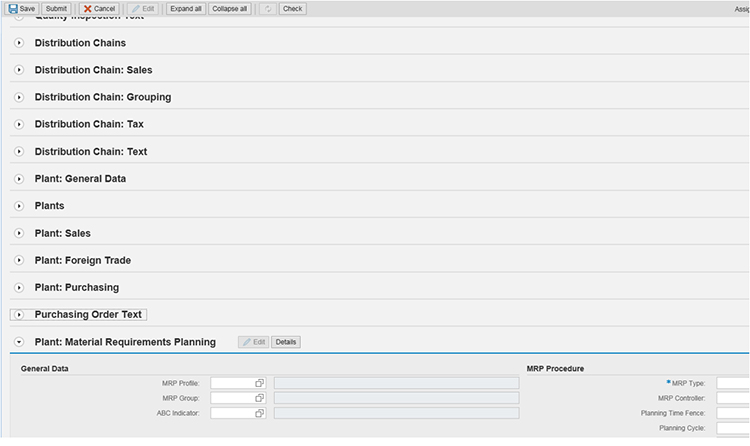
G/L Accounts
Financial master data setup in SAP Master Data Governance includes G/L accounts. G/L master records typically consist of a chart of accounts segment and a company code-specific segment. Information that is entered in the chart of accounts segment (for example, a description) applies to all company codes across the client. The Financial Accounting Governance dashboard (Figure 8) is the starting point for maintaining G/L accounts.
Figure 9 lists some of fields that need to be populated while creating new G/L accounts in SAP Master Data Governance.
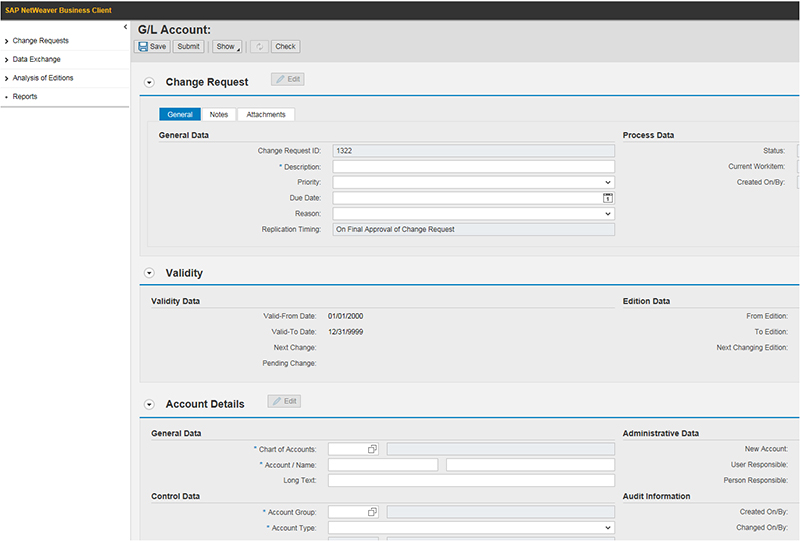
CO Master Data
The CO master data setup in SAP Master Data Governance includes cost center and profit centers. The cost center is an object within a controlling area that represents a clearly defined location where costs are incurred (for example, marketing, physician’s payroll costs, and so on). Organizational divisions that are created can be based on a functional area or activity; they also can be spatial or based on a responsible person. The one-stop shop for such data is the Financial Controlling Governance dashboard (Figure 10).
Figure 11 shows the sections of the Cost Center screen.
Customer Master Data
Customer master data contains the information about the buyers that a hospital supplies goods or services to or does business with. While the general data is global, the sales data is specific to the sales area and relevant to the sales organization, distribution channel, and division. Company code data includes fields such as accounting info, interest calculation, payment terms, and insurance terms. Figure 12 shows the customer master data views.
Acccording to Dr. Tarun Ghosh at Coliseum Northside Hospital, “Whenever evaluating new software products for our hospital, we lay special emphasis on the overall implementation cycle time and any potential adverse impact to the ongoing business.”
One of the advantages of implementing SAP Master Data Governance at hospitals is the relatively short implementation cycle. Much of the technical functionality of SAP Master Data Governance is model driven and supports a coding-free implementation. Technological functional consultants can play both roles with ease and implement SAP Master Data Governance. Many consultants are well versed with the standard technical components such as the SAP Business Workflow, Business Rule Framework, and Advanced Business Application Programming (ABAP) Dictionary that are used across several SAP products and modules. Such workforce functions can be smoothly transitioned over to the SAP Master Data Governance module with limited training. Many organizations upgrade to SAP Master Data Governance from their legacy master data systems such as SAP ECC. Just blueprinting some basic concepts such as data modeling, workflow, and SOA Manager/IDoc replication setup can easily get your healthcare organization started on this journey.
(Note: SOA Manager is used for the configuration of service providers and consumer proxies in a local system. Execute transaction code SOAMANAGER to access it.)
For more information go to these sites:
- https://discovery.hgdata.com/product/sap-master-data-governance
- https://blogs.perficient.com/author/nnehru/

